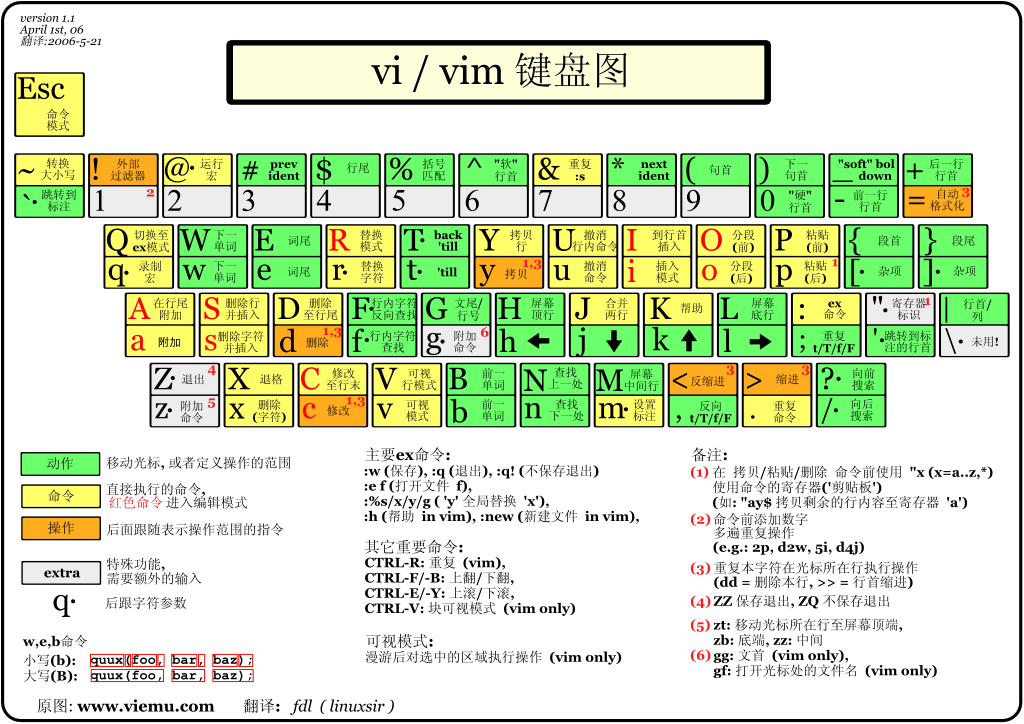数据结构_队列(C++
数据结构_队列(C++实现
前言:此类笔记仅用于个人复习,内容主要在于记录和体现个人理解,详细还请结合bite课件、录播、板书和代码。
[toc]
前言
没什么好说的
也就是
队列一般用链表实现比较常用,下面实现的也是链式栈
==注意下面类的提前声明和友元类的作用==
==assert果然还是太暴力了,能不用就不用吧,但是一定要记住要判断 指针 为空的情况==
- ==可以抛出异常信号 (建议用这个,因为运行错误的时候知道原因==
- ==可以直接返回==
- 判断指针head为空的方式
cpp
2
3
4
5
6
7
8
9
// head为空的话head就相当于0(假),非空就是真,所以当head为空的时候,!head就是真
throw nullPointer();//这里使用了抛出异常信号的方式,而且抛出的是一个匿名对象(因为要的是它的类型,没必要给对象命名了)
//如果采用直接返回的方式
if(!head)
return;//直接返回的话,在有返回类型的函数里面可能会报错
//以上两者都可以终止函数,不过直接return只能用在无返回值函数上,return本质是终止函数运行并返回NULL
实现
queue.h
cpp
2
3
4
5
6
7
8
9
10
11
12
13
14
15
16
17
18
19
20
21
22
23
24
25
26
27
28
using namespace std;
class nullPointer
{
};//用作异常信号
template<class elemType>
class Queue;//类的向前声明,因为下面的Node中要用到Queue类
template <class elemType>
class Node
{
friend class Queue<elemType>;//将Queue看作Node的友元类,这样Queue中(Node类外)可以访问Node的私有成员,后面Queue的函数用到了Node的私有成员
private:
elemType data;
Node *next;
public:
Node() { next = NULL; };
Node(const elemType &x, Node *p = NULL)
{
data = x;
next = p;
}
};==这里一定要注意为什么提前声明queue以及为什么Node类将queue类看作友元类==
==还要注意==
==类的向前声明的时候类后面不加模板参数,但是前面一定要有参数模板的声明;==
==友元类后面一定要有模板参数==
==就按上面的写法==
cpp
2
3
4
5
6
7
8
9
10
11
12
13
14
15
class Queue
{
private:
Node<elemType> *head, *tail;
public:
Queue() { head = tail = NULL; };
bool isEmpty() { return !head; };//队列为空(头结点为空)返回真
bool isFull() { return false; }; //这个函数没有意义,因为队列是单链表,没有满容可言
elemType getHead();
void pushQueue(const elemType &x); //入队,尾插
void popQueue(); //出队,头删
~Queue();
};queue.cpp
cpp
2
3
4
5
6
7
8
elemType Queue<elemType>::getHead()
{
if (head == NULL) // if(!head)等价于if(head==NULL),head==NULL是head为空时等式成立,值为真
// head为空的话head就相当于0(假),非空就是真,所以当head为空的时候,!head就是真
throw nullPointer();
return head->data;
}if(!head)等价于if(head==NULL)
head==NULL是head为空时等式成立,值为真
head为空的话head就相当于0(假),非空就是真,所以当head为空的时候,!head就是真
cpp
2
3
4
5
6
7
8
9
10
11
12
13
14
void Queue<elemType>::pushQueue(const elemType &x) //入队,尾插
{
Node<elemType> *New = new Node<elemType>(x);
if (!head)
{
head = tail = New;
}
else
{
tail->next = New;
tail = tail->next;
}
}cpp
2
3
4
5
6
7
8
9
10
11
12
13
14
void Queue<elemType>::popQueue() //出队,头删
{
if (head == NULL)
return;
//用return和throw queueIsNull()都可以终止函数,不过直接return只能用在无返回值函数上
//return本质是终止函数运行并返回NULL
Node<elemType> *p = head;
head = head->next;
delete p;
if (head == NULL)
tail = NULL;
}用return和throw queueIsNull()都可以终止函数,不过直接return只能用在无返回值函数上
return本质是终止函数运行并返回NULL
cpp
2
3
4
5
6
7
8
9
10
11
12
13
Queue<elemType>::~Queue()
{
if (!head)
throw nullPointer();
Node<elemType> *p = head;
while (p)
{
head = head->next;
delete (p);
}
tail = NULL;
}
练习
有些函数直接作为了上面实现的队列的成员函数,用的时候别忘了在queue.h中声明
用两个队列实现栈
cpp
2
3
4
5
6
7
8
9
10
11
12
13
14
15
16
17
18
19
20
21
22
23
24
25
26
27
28
29
30
31
32
33
34
35
36
37
38
39
40
41
42
43
44
45
46
47
48
49
50
51
52
53
54
55
int Queue<elemType>::size()
{
Node<elemType> *p = head;
int x = 0;
while (p)
{
x++;
p = p->next;
}
return x;
}
template <class elemType>
class Stack_queue
{
private:
Queue<elemType> a, b;
public:
void push(const elemType &x)
{
if (!a.isEmpty())
a.pushQueue(x);
else
b.pushQueue(x);
}
void pop()
{
// assert(!a.isEmpty() && !b.isEmpty());
Queue<elemType> *qEmpty = a.isEmpty() ? &a : &b;
Queue<elemType> *qUnEmpty = a.isEmpty() ? &b : &a;
while (qUnEmpty->size() > 1)
{
qEmpty->pushQueue(qUnEmpty->getHead());
qUnEmpty->popQueue();
}
qUnEmpty->popQueue();
}
elemType top()
{
// assert(a.isEmpty() && !b.isEmpty());
Queue<elemType> *qEmpty = a.isEmpty() ? &a : &b;
Queue<elemType> *qUnEmpty = a.isEmpty() ? &b : &a;
while (qUnEmpty->size() > 1)
{
qEmpty->pushQueue(qUnEmpty->getHead());
qUnEmpty->popQueue();
}
int x = qUnEmpty->getHead();
qEmpty->pushQueue(qUnEmpty->getHead());
qUnEmpty->popQueue();
return x;
}
};两个队列,一个总是空的,一个总是不空的
入栈就进非空队列,出栈把非空队列的前n个出到空队列,pop非空队列最后一个元素
非空队列就变成了空队列,空队列就变成了非队列
现有一个整数队列, 需要将其前 k 个元素进行逆置, 剩余的元素保持原来的顺序。
例如队列[1, 2, 3, 4, 5, 6, 7, 8, 9], 若 k 为 4, 则需要将队列调整为[4, 3, 2, 1, 5,6, 7, 8, 9]
cpp
2
3
4
5
6
7
8
9
10
11
12
13
14
15
16
17
18
19
20
21
22
23
24
25
26
27
28
29
30
31
32
template <class elemType>
void Queue<elemType>::Reverse_k(int k)
{
Queue<elemType> q;
seqStack<elemType> s;
int i=0;
while(i<k)//前k个元素放到栈中
{
s.push(getHead());
popQueue();
i++;
}
while(head)//后n-k个元素放到临时队列中
{
q.pushQueue(getHead());
popQueue();
}
while(!s.isEmpty())//栈中的元素放到主队列
{
pushQueue(s.top());
s.pop();
}
while(q.head!=NULL)//临时队列的元素放到主队列中
{
pushQueue(q.getHead());
q.popQueue();
}
}思路:前k个元素放到临时栈,后n-k个元素放到临时队列,再从临时栈中入到主栈,临时队列入到主栈
现在有一批同学需要接收面试, 参加面试的同学按照先到先面试的原则接受面试官的考查。 本次面试中面试官最看重的是同学的成绩, 现在面试官小明需要你设计程序实现以下功能:
(1) 某位同学加入面试队伍, 输入其名字和成绩;
(2) 队伍最前端的同学的面试结束, 离开场地;
(3) 小明想知道当前面试队伍里最好成绩是多少。
cpp
2
3
4
5
6
7
8
9
10
11
12
13
14
15
16
17
18
19
20
21
22
23
24
25
26
27
28
29
30
31
32
33
34
35
36
37
38
39
40
41
42
43
44
45
46
47
48
49
50
51
52
53
54
55
56
57
58
59
60
61
62
63
64
65
66
67
68
69
70
71
72
73
74
75
class interview_team; //类的向前声明
template <class elemType>
class iNode
{
friend class interview_team<elemType>; //看作Node的友元类,友元类可以访问Node的私有成员
private:
string name;
int point;
iNode<elemType> *next;
public:
iNode(string name = "null", int point = 0)
{
this->name = name;
this->point = point;
next = NULL;
}
};
template <class elemType>
class interview_team
{
private:
iNode<elemType> *head, *tail;
public:
interview_team() { head = tail = NULL; }
void i_push(string name, int point)
{
if (head == NULL)
{
head = tail = new iNode<elemType>(name, point);
}
else
{
tail->next = new iNode<elemType>(name, point);
tail = tail->next;
}
}
void i_pop()
{
if (head == NULL)
return;
iNode<elemType> *p = head;
head = head->next;
delete (p);
if (head == NULL)
tail == NULL;
}
int i_best()
{
if (!head)
return -1;
iNode<elemType> *p = head;
int best = -1;
while (p)
{
if (p->point > best)
best = p->point;
p = p->next;
}
return best;
}
};思路:其实就是实现STL的队列中的部分功能
结束
That’s all, thanks for reading!💐







